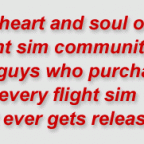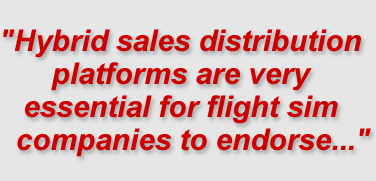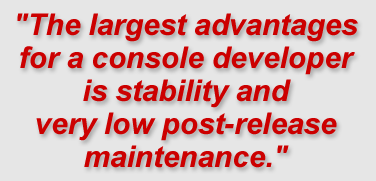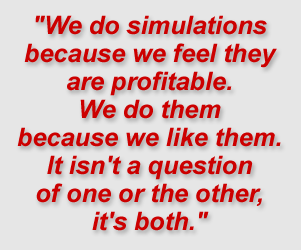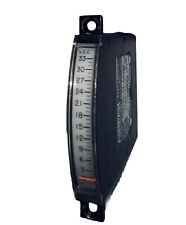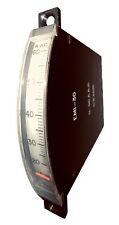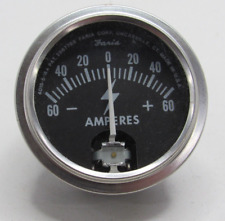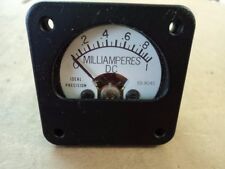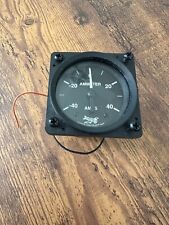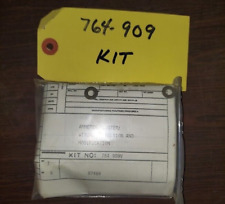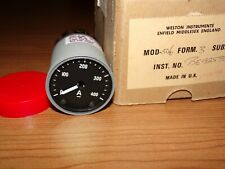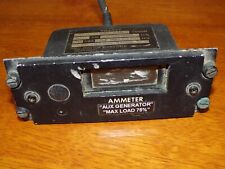After the 2005 E3Expo we ran a series of discussions (linked on our homepage) on The Future of Simulations where we asked the SimHQ Staff for their thoughts on the state of the simulations industry. We’ll now follow-up those discussions from the developers point of view. As a reference, you should also read this SimHQ 2000 two-part interview series available in .pdf here and here to see the PC simulation industry’s leaders point-of-view from five years ago.
Our Panel of Participants
| Martin van Balkom President Battlefront.comAl Delaney Founder, President and Lead Programmer eSim Games, LLCSteve Grammont Co-founder Battlefront.comDavid Heath Director of Operations, Public Relations and Acquisitions Matrix Games |
Nils “Ssnake” Hinrichsen Marketing & Sales Director eSim Games, LLCRick “Rjetster” Ladomade Vice President, Treasury Xtreme Simulations International, LLCJulian “Buckshot” Leonard Vice President, Engineering Xtreme Simulations International, LLCChris “C3PO” Partridge Publicity & Marketing Lead Pursuit, LLC |
SimHQ: We would like to thank all of you for your participation in this round table discussion. For those of you that are not familiar with the format let me explain. Over the next few days we will ask you a series of questions concerning the future of simulations. Please answer these as candidly as you can. Don’t feel compelled to answer all of the questions; some may not apply to your particular field or you may be compelled not to answer due to contractual agreements. We understand that and are happy with any answers that you can provide. This discussion will center upon several topics to include nontraditional gaming platforms (read consoles), alternate methods of receiving a product and the overall potential of simulations to remain viable in the ever competitive (and contracting) world of PC gaming.
Our first set of questions will concern product development and marketing. Typically we hear about scalability within the same product. Will that trend continue or do you foresee a time when we’ll have multiple categories for the same product? For example, a high-fidelity sim and a casual gamer sim.
Product Development and Marketing
David (Matrix Games): According to marketing doctrine the inevitable life cycle of a product is to break it into more fragments. This will eventually hold true for flight sims. More importantly it is already going on, there are plenty of first person shooters or first person simulations that are laughable in scale compared to the more complex flight sims, such as IL-2. These titles typically are low budget at this stage, since they are less complex. It is important to note, however, that this process of fragmentation is being slowed by the fact that massive flight sims are so much work that creating scalability is a relatively minor addition. I believe to some degree scalability will be a part of any successful complex flight sim, else the genre would be prohibiting new players. So, yes, multiple categories are inevitable but “massive” flight sims will always have some degree of scalability.
Chris (Lead Pursuit): There shouldn’t really be a reason for any difference. The ideal product should engage as many enthusiasts as it can, at whatever skill level. Of course, this is difficult to achieve because of resources and time. In fact, the greatest and most difficult challenge for developers is making the simulation as accessible as possible. Clear understanding — the necessity for appealing to the casual gamer — is vital. Achieving that is difficult.
Martin (Battlefront): A high-fidelity sim is more than the sum of a few tweaked realism settings. A good casual sim and a good high-fidelity sim should normally mean that different design concepts are applied from the ground up. Notice that I said “good”.
But of course when you ask if the trend will continue, then the answer is “probably yes”. The reason being economics… the sim market is small enough already without breaking it further apart into segments, and especially mainstream publishers need to make a sim appealing to as wide an audience as possible to keep even a glimpse of hope of making a profit of it. Notice that I said “mainstream publishers”. Battlefront isn’t one…
Rick (XSI): I really believe it all depends on what your markets desires are, as many of these flight simulations are aimed at a wide variety of interests. It’s a brave new world out there, and the gaming markets are constantly adjusting to meet the predictable requirements of flight sim consumers. I do believe though that flight sim developers will always need to continuously embrace and support their products scalability options, hardcore or not…whether that includes the accessibility of a pop-up manual during flight, or a co-pilot who takes you through the various training missions and exercises…other available options that are usually standard in most sims would continue to include scalable flight models, the use of unlimited fuel, ammo and weapons if needed, and the addition of an all-inclusive expanding tutorial with the modular sims. We should also look into introducing various teaching programs that may help to entice the newer recruits in this market, and bridge the gap between the learning curve. One noteworthy item that new simmers need to also recognize is, if your planning to purchase a high fidelity flight sim for the PC, you should definitely make the effort to prime yourself with the necessary time needed to get the very most out of your flight sim experience.
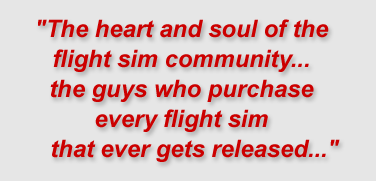 Julian (XSI): I don’t think the high-fidelity market is big enough to cater to exclusively. Unfortunately this in many cases has led to developers/publishers ignoring them completely and concentrating on the casual market completely. With Fighter Ops our main goal is the high fidelity market, but we do realize that for us to be successful we need to have scalability. In that regard I guess we are approaching this from the opposite end to many other developers, we are aiming to please the most demanding market first, then add in the scalability for the casual gamer. One of the things that has annoyed me the most in the past, and I guess one of the big reasons we started the Fighter Ops project, is the comment that the hardcore crowd, or the people who fly in online squadrons or people who build home cockpits are not big enough to worry about. Sure I agree that you will make more money by selling to the casual gamer who purchases a simulator off the shelf, plays with it for a few months and moves on to the next thing, however really if you are in the flight simulation business solely to make money, you’d have to seriously consider your choice of genre and platform. The heart and soul of the flight sim community, IMHO, is the guy who flies online every week with an established squadron, he’s built his own cockpit, yeah they are the minority (although I think there are many more of these people than some companies believe), but they are the guys who purchase every flight sim that ever gets released, they are the guys who stick with us year after year. Catering for the casual market is the easiest part, and I think too often developers (albeit often forced by publishers) take the easy route and use the excuse that the market isn’t big enough to worry about.
Julian (XSI): I don’t think the high-fidelity market is big enough to cater to exclusively. Unfortunately this in many cases has led to developers/publishers ignoring them completely and concentrating on the casual market completely. With Fighter Ops our main goal is the high fidelity market, but we do realize that for us to be successful we need to have scalability. In that regard I guess we are approaching this from the opposite end to many other developers, we are aiming to please the most demanding market first, then add in the scalability for the casual gamer. One of the things that has annoyed me the most in the past, and I guess one of the big reasons we started the Fighter Ops project, is the comment that the hardcore crowd, or the people who fly in online squadrons or people who build home cockpits are not big enough to worry about. Sure I agree that you will make more money by selling to the casual gamer who purchases a simulator off the shelf, plays with it for a few months and moves on to the next thing, however really if you are in the flight simulation business solely to make money, you’d have to seriously consider your choice of genre and platform. The heart and soul of the flight sim community, IMHO, is the guy who flies online every week with an established squadron, he’s built his own cockpit, yeah they are the minority (although I think there are many more of these people than some companies believe), but they are the guys who purchase every flight sim that ever gets released, they are the guys who stick with us year after year. Catering for the casual market is the easiest part, and I think too often developers (albeit often forced by publishers) take the easy route and use the excuse that the market isn’t big enough to worry about.
Nils (eSim Games): If a simulation game’s prime development goal is entertainment, then scalability is sufficient to address the different expectations of different consumer groups.
What is needed in our case, Steel Beasts, is what marketing theory calls “product variation.” It is not always possible to meet both the demands for some serious training value and great entertainment in good compromise. This means however that a developer actually CAN cater to different markets. For a battle simulation that deals with contemporary armored vehicles this is possible. Within limits, that seems to be the case for some flight simulations as well. But not every simulation title is suited or even targeted for a training/educational purpose.

